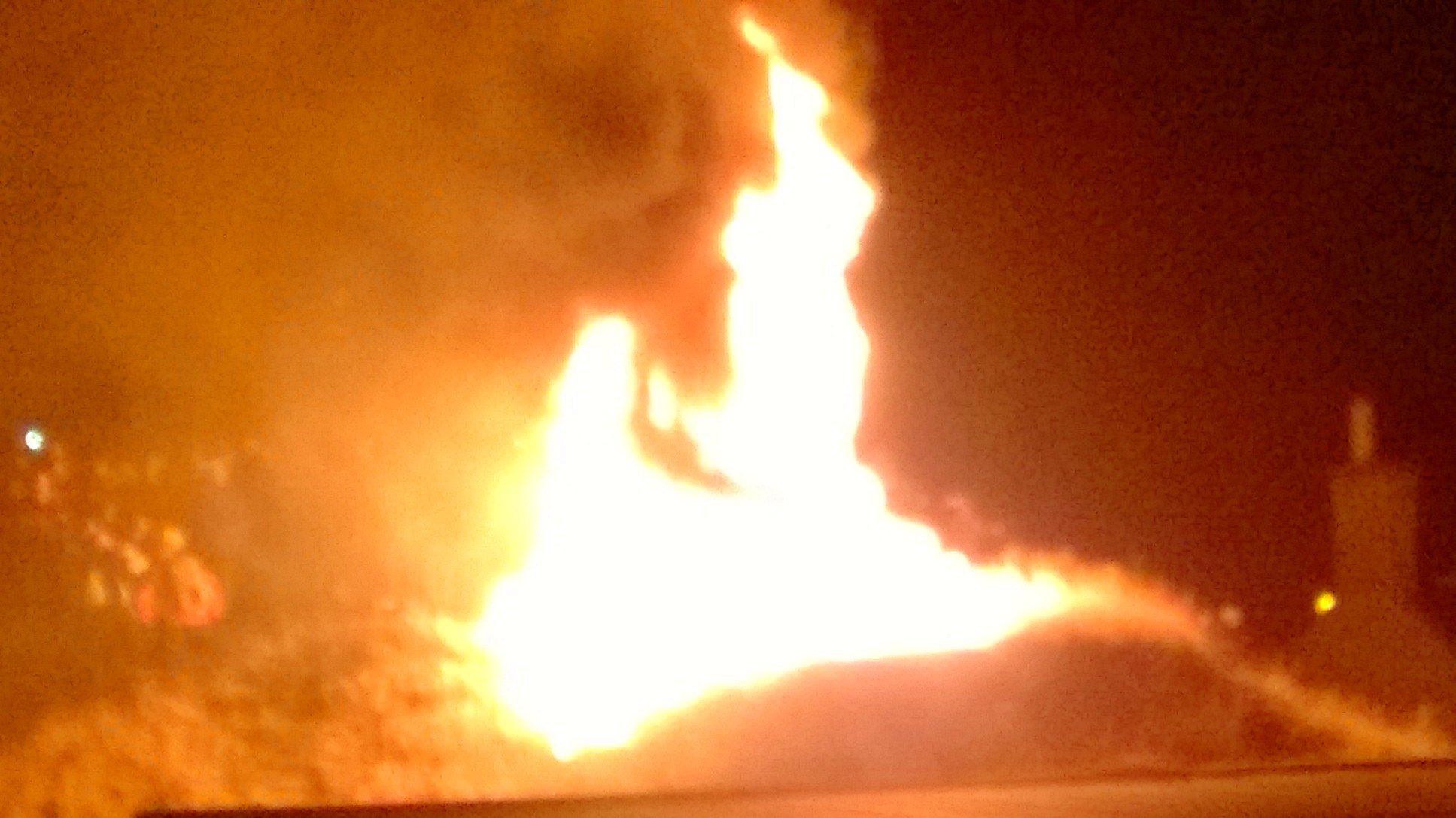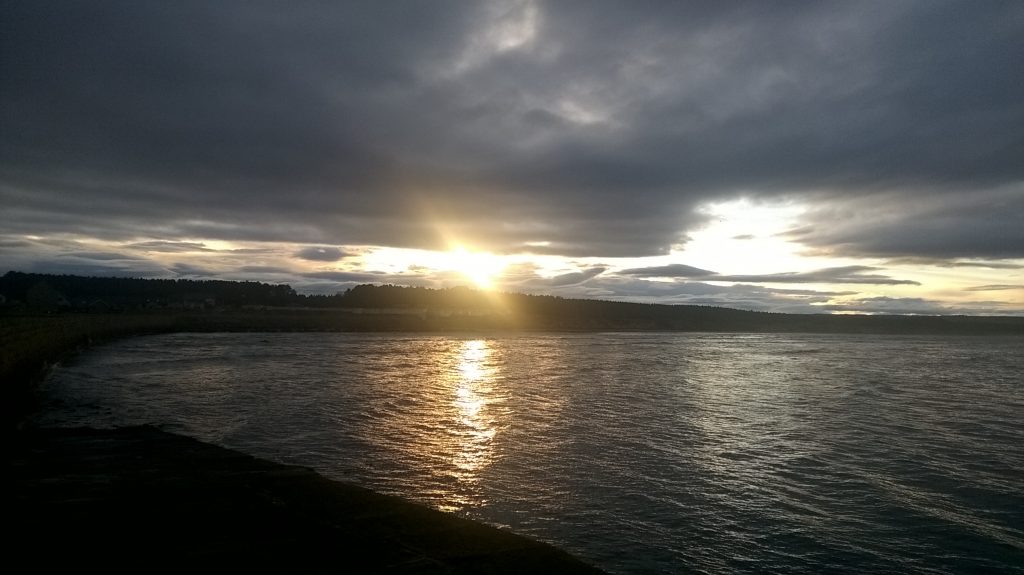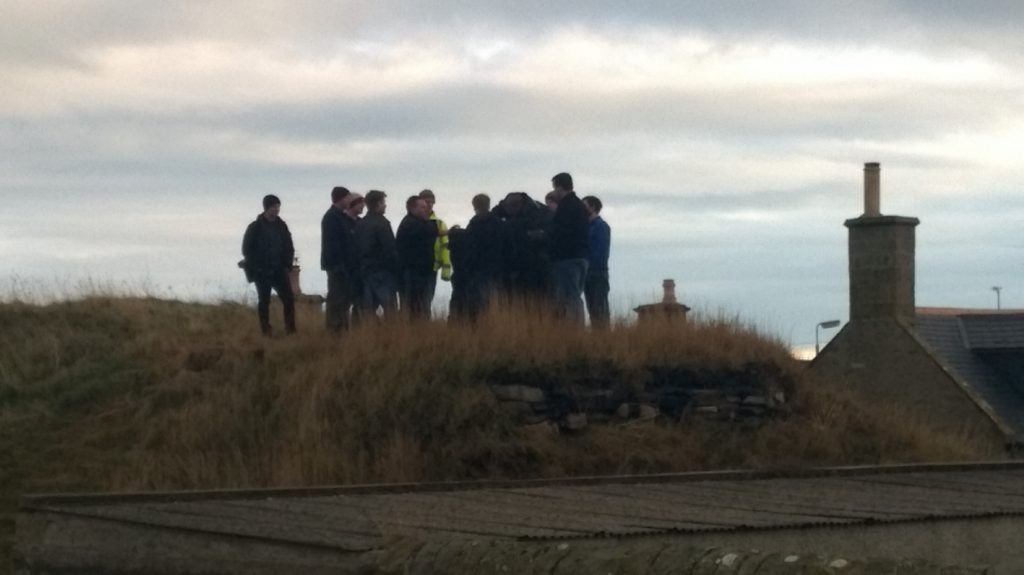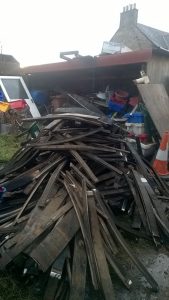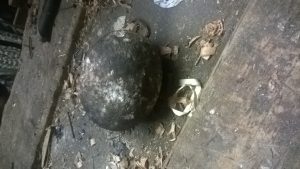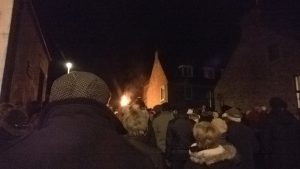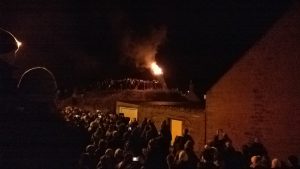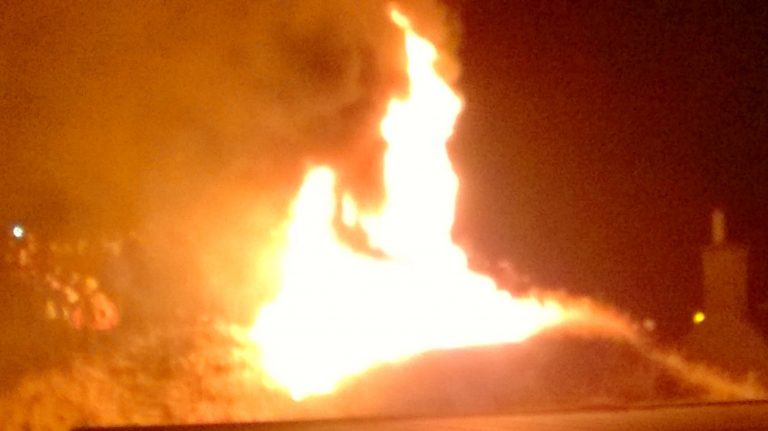Held on January 11 – according to the old Julian calendar – this annual New Years’ ritual is performed in the Scottish town of Burghead, a fishing village on the Moray Firth. No one quite remembers how or why it was started but the burning of the barrel with its rags soaked in diesel is part of the same festivities as “First footing”, all to do with welcoming the New Year in and bringing good luck.
In January 2016 I attended a folklore conference in Findhorn, near to Elgin, Scotland. The conference included visits to the local whiskey distillery and as a climax a visit to Burghead to watch the Burning of the Clavie from the morning when it was being made to late evening to watch the last remnants being burnt.
Burghead – as the name suggests – is a headland with one side relatively calm whilst the other facing west is much rougher.
Early morning of January 11, 2016 looking out to the East of the Burghead headland.
The ancient inhabitants of this area were the Picts. The word Picti is Latin for painted and is thought to have referred to the people as ‘painted, or tattooed’. It would have been easy to link the Picts to the Vikings and the old funerary custom of burning the boats with the body of the deceased. Unfortunately, there is no evidence that the Burning of the Clavie is ancient. There are certainly mentions of ‘fire ceremonies’ in the Lowlands of Scotland and they include the Stonehaven Fireballs.
From the website of “The Stonehaven Fireballs Association”
“In Scotland there were mid-winter bonfires at Dingwall, Campbeltown, Invergordon, Corrie, Biggar, and Newton Stewart. Boat burning was also a custom in coastal communities like Stranraer and Bettyhill in Sutherland as well as all up the north-east coast. The burning of the Clavie at Burghead is similar to our fireballs in that it is a more of a procession.
There are even more fire ceremonies in the rest of Britain but Stonehaven’s Fireball ceremony at Hogmanay is one of the more memorable. It consists of mainly local people of all ages swinging flaming wire cages, around their heads. Each cage is filled with combustible material (each swinger has their own recipe) and has a wire handle two or three feet long.
The event starts at midnight, lasts twenty-five minutes and is watched by thousands. The idea behind the ceremony is to burn off the bad spirits left from the old year so that the spirits of the New Year can come in clean and fresh. From current research the ceremony would seem to go back from a hundred to a hundred and fifty years, but it could easily be much older. At the moment there is no written documentation of the event before 1908. The only source of recorded information is the local newspaper of the time – The Stonehaven Journal.”
The fact that the Clavie tradition is still celebrated according to the old calendar would seem to infer that it was more of a protest against the Scottish Presbyterian Church and its puritanical ways than anything.
So how is the Clavie made? The Clavie Crew consists of boys and men from Burghead. The stone or ruined altar, commonly called the Doorie after Doorie Hill, is checked and prepared by the crew. Here is where the Clavie is brought and consequently thoroughly burnt as a huge bonfire.
Checking the Doorie by the Clavie Crew.
Meanwhile the Clavie King, makes the Clavie. Using old barrel staves, he creates the new Clavie.
Using old barrel staves for the Clavie
The barrel is kept in place with a huge nail – which is the nail from the year before. It has been suggested that the word Clavie comes from the Latin word clavus meaning nail.
The clavus or nail used to hold the Clavie together.
The cask part is then filled with old rags and doused with diesel. At 6pm, when it is dark, the villagers gather near to where the Clavie has been made. And then the moment of excitement when the Clavie King ignites it.
The Clavie is ignited… and the procession begins.
The procession then begins to proceed through the streets of Burghead. The King and a couple of boys stop at front doors and hand out smouldering pieces of the Clavie and other treats.
The Clavie is brought to the altar/ stone.
Finally, the Clavie is brought to the altar at the top of the headland. More diesel is poured on to the rags and the fire erupts. Those nearby and the grass on the slope are scorched – the crowd is ecstatic!
Video..
Even though we stand well back we can hear the explosions… and feel the heat.
The Clavie ablaze…
Watching the Clavie burning. Burning of the Clavie, 2016
The year we were there it was dry and there wasn’t too much wind. The bonfire lasted a long time and we could enjoy it and join in the celebrations. The New Year was here!
The following day we went back to Burghead to see what was left. And more importantly to see if we could find a piece of the charcoaled Clavie.
We were in luck. Amidst the scorched grass, still smelling of smoke, Dronma found a couple of pieces. Carefully putting the pieces in our bag, we left with wonderful sense of victory. Were the spirits of the Old Year driven away? I would like to think so.
I also read that “The charcoal of the clavie is collected and put in pieces up the cottage chimneys, to keep spirits and witches from coming down.” 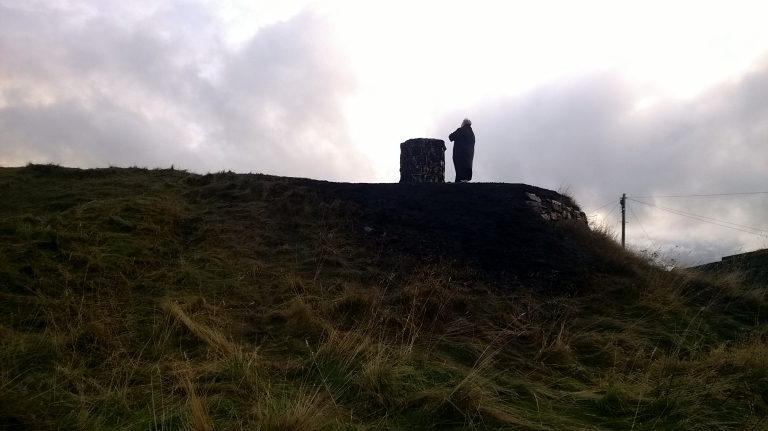
The day after at the Doorie, the scorched grass slope still smelling of smoke.
References;
“The Stonehaven Fireballs Association”: http://stonehavenfireballs.co.uk/about
https://www.walkersshortbread.com/blog/post/what-are-scotlands-new-year-traditions/
First-Footing: Definitely one of the most famous Hogmanay traditions, first-footing sees friends and family heading over to each other’s abodes just after midnight on New Year’s Eve. The first person to cross a house’s threshold in the New Year is known as a first-foot, and must bestow a Hogmanay offering, or else the homeowner is at risk of bad luck for the rest of the year. Popular gifts that cross hands at the midnight hour include shortbread, black bun (a traditional Hogmanay fruit cake topped with pastry) and whisky.
“Burning of the Clavie”: https://en.wikipedia.org/wiki/Burning_of_the_Clavie.
Information about 2018: http://blog.pictcha.me/burning-of-the-clavie-2018/
